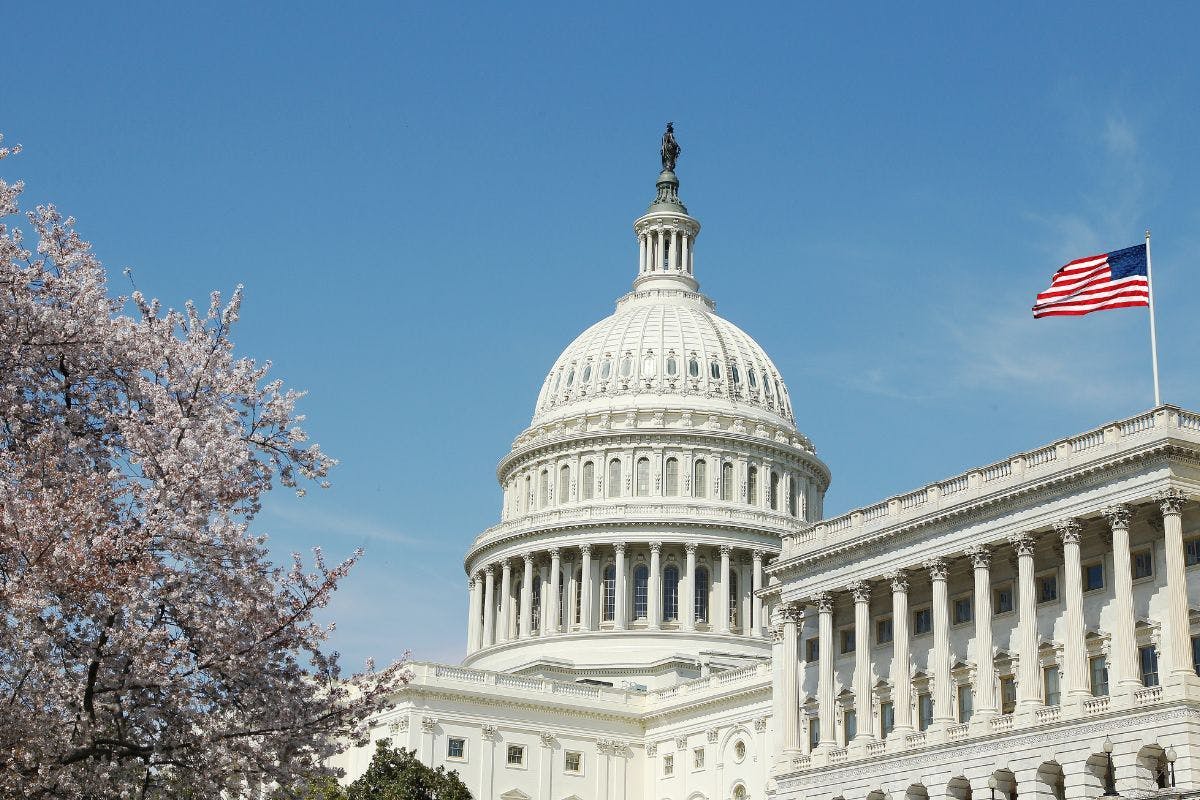What Are Peak and Off-Peak Electricity Hours?
Last edited

Author
Andrew Blok
Electrification and Solar Writer and Editor

Editor
Ryan Barnett
SVP, Policy & New Market Development

It’s possible to cut a rising electric bill by using electricity at different times. You don’t have to use less power or sacrifice. It could just mean taking advantage of time-of-use electric rates and shifting energy to off-peak periods.
A little planning around your utility company’s TOU or peak rate plans can turn this fine print in your favor. This is especially true if you’re already a user of home solar panels, home batteries, or an EV charger. Here are ways you can save money with time-of-use plans or peak electricity rates.
See how much you can save by going solar with Palmetto
What Are Time-of-Use Plans?
Time-of-use (TOU) plans set the price per kilowatt-hour you pay for electricity, based on the time when you use that electricity. Typically, electricity is most expensive when demand is highest or energy is most expensive to produce. While you might spend more during times of highest demand, you might spend less during times of low demand.
Ready to work those peak hours to your advantage? The free Palmetto app shows you exactly when you're using energy, helps you shift usage to cheaper hours, and rewards you with points for beating your weekly targets—turning TOU rates from confusing to profitable.
What Are Peak Electricity Hours?
Peak electricity hours are those periods throughout the day when electricity is in high demand, so consumers pay an increased rate per kilowatt-hour of electricity. These hours can vary by location, season, electricity company, and other factors.
Utility companies and retail electric providers use this strategy to reduce the negative effects of high demand on the electricity grid. Their goal is to protect the power grid and avoid scenarios where there isn’t enough electricity to meet everyone’s demands.
What Are Off-Peak Electricity Hours?
Off-peak electricity hours are periods when the electricity demand is low and electricity is cheaper for utility customers. During these times, utilities and electric companies don’t have to pay as much to generate electricity because people are using less energy overall.
Put simply, electricity is cheaper when an excess supply is available, and more expensive when there is excess demand.
What Are Super Off-Peak Hours?
Some electric companies create time-of-use plans with a third level called super off-peak hours. During these hours, electricity prices are the lowest because demand is at its lowest point.
The goal of super off-peak rates is to shift demand away from those peak hours for electricity usage, to help normalize energy demands throughout the day and make the supply needs more consistent.
Why Do Companies Use Peak and Off-Peak Hours for Electricity?
The general strategy for peak and off-peak hours is to shift consumer electricity usage to different times of the day. When electricity consumption peaks, it's harder to generate power quickly to meet that demand. Creating time-of-use plans helps to shift that usage towards off-peak electricity hours when demand is lower.
The relationship between demand and generation
Utility companies must ensure power plants are operational and can generate enough power for everyone. They know electricity demand on the grid changes continuously depending on the season of the year, time of day, and schedule of people in their homes.
Every time demand increases, grid operators need to request more electricity from generators. If those generators can’t ramp up production quickly enough, the electricity companies must purchase extra electricity from other sources. The result is increased wholesale prices, leading to a higher rate per kilowatt-hour.
Different plants often use different methods to generate power. While some plants can power up to maximum capacity within an hour, others can take up to a day, so different methods are used at different times. In the worst-case scenario, if generation can't increase fast enough to meet this high demand, blackouts may occur.
Off-peak and peak times also support the ongoing shift to cleaner energy in some states. For instance, California is increasingly powering its grid using clean energy sources like solar and wind. But after sunset, when people are returning home, energy demand shoots up just as the sun is setting on those solar panels.

Credit: EIA
To meet this increased demand during the peak hours for electricity, the utility companies may have to revert to carbon-intensive sources that emit greenhouse gases. By implementing TOU rate plans, electric providers can encourage people to use less energy during times when solar energy generation is lower, and maximize use when solar power is plentiful.
Battery storage, which allows the grid to use stored solar energy later in the day, is one energy source that's easy to ramp up and help supply meet peak demand. Even home batteries, when they're joined together in a virtual power plant, can help meet the demand during peak hours.
See how much you can save by going solar with Palmetto
Common Hours for Peak and Off-Peak Electricity
Peak and off-peak electricity hours can vary with season, location, and utility company.
Summer often witnesses peak demand hours from 1 p.m. to 7 p.m. on weekdays, or 4 p.m. to 9 p.m. in some regions of the country, as a result of people using air conditioning. Off-peak periods are typically 8 p.m. to 8 a.m. during this season.
In the winter, peak periods tend to be from 6 a.m. to 10 a.m. and 5 p.m. to 9 p.m., the times when people are waking up from sleep and getting home from being out in the world. Off-peak electricity hours typically happen around 10 a.m. to 5 p.m. and 9 p.m. to 6 a.m., the times when people are out of the house or asleep.
Saturdays and Sundays typically count as off-peak periods no matter the season, and some utility companies also include holidays occurring during the week in their off-peak rates.
To give you an idea of what these peak and off-peak hours look like in practice, here are a few examples from some of the largest utility companies in the country:
Pacific Gas & Electric (PG&E) peak and off-peak hours
PG&E offers different options for time-of-use plans:
E-TOU-C: The electricity peak hours are from 4 p.m. to 9 p.m. every day, with off-peak hours before 4 p.m. and after 9 p.m.
E-TOU-D: The price you pay depends on the time of day, the day of the week, and the season. Peak hours are from 5 p.m. to 8 p.m. Monday-Friday (except most holidays) and off-peak hours are before 5 p.m. and after 8 p.m. Monday-Friday and all hours on weekends and most holidays.
E-ELEC: E-ELEC is the only TOU plan eligible with solar for PG&E customers in California’s NEM 3.0 net billing credit program. The E-ELEC rate is based on season, higher June-September and lower the rest of the year. The peak hours are 4 p.m. to 9 p.m. every day. Partial-peak hours are 3-4 p.m. and 9 p.m.-12 a.m. every day. Off-peak hours are midnight to 3 p.m. every day.
In E-TOU-C, E-TOU-D, and E-ELEC, the months of October through May have lower peak prices than the four months of summer (June-September).
E-TOU-D may be more attractive for higher energy users because the price of electricity is lower than E-TOU-C if a customer exceeds a set monthly usage level, or what PG&E terms a “baseline allowance.” In a E-TOU-C plan, there is a bill credit given for remaining below the baseline usage level.

Southern California Edison (SCE) peak and off-peak hours
SCE offers three different options for time-of-use plans, with super off-peak, off-peak, mid-peak, and on-peak rates:
TOU-D-4-9PM - In the summer (June to September) during the week, on-peak hours are 4 p.m. to 9 p.m., with off-peak hours before 4 p.m. and after 9 p.m. On weekends, that 4 p.m. to 9 p.m. window becomes a mid-peak rate that’s lower than the on-peak hours.
In the winter (October to May) mid-peak hours are 4 p.m. to 9 p.m., with off-peak hours from 9 p.m. to 8 a.m., and super off-peak hours from 8 a.m. to 4 p.m. There is no change between weekday and weekend pricing.
TOU-D-5-8PM - This plan is better for customers who end the night early, and are home during the day. In the summer, on-peak hours are 5 p.m. to 8 p.m. during the week, with off-peak hours after 8 p.m. and before 5 p.m. On weekends, the 5 p.m. to 8 p.m. rate becomes mid-peak.
In the winter, mid-peak is between 5 p.m. and 8 p.m., with super off-peak hours from 8 a.m. to 5 p.m., and off-peak hours from 8 p.m. to 8 a.m. There is no change between weekdays and weekends.
TOU-D-PRIME - This rate is designed specifically for the owners of electric cars or plug-in hybrids, homes with battery storage, and customers with an electric heat pump for water or space heating. It is ideal for customers who use clean energy and can shift their energy usage to lower-cost times. It is the only TOU plan eligible with solar for SCE customers in California’s NEM 3.0 net billing credit program.
The summer on-peak hours are from 4 p.m. to 9 p.m. during the week, with off-peak hours before 4 p.m. and after 9 p.m. On weekends, the rate between 4 p.m. and 9 p.m. lowers to mid-peak.
In the winter, the super-off peak is from 8 a.m. to 4 p.m., with mid-peak rates between 4 p.m. and 9 p.m., and then off-peak rates between 9 p.m. and 8 a.m., with no change between weekdays and weekends.

Duke Energy peak and off-peak hours
Duke Energy operates in North Carolina, South Carolina, Ohio, Florida, Kentucky, and Indiana, so check all plans and rates by state.
R-TOU - In North Carolina, Duke Energy has three rate categories: on-peak, discount, and off-peak. On weekdays from May-September, on-peak rates are from 6 p.m. to 9 p.m. On weekdays the rest of the year, on-peak rates are from 6 a.m. to 9 a.m. There are no on-peak rate periods on weekends and certain holidays.
Duke Energy has discount rates on all days from May-September from 1 a.m. to 6 a.m. and from October-April from 1 a.m. to 3 a.m. and 11 a.m. to 4 p.m. Off-peak periods are all periods not in the on-peak or discount periods.
Florida Power & Light (FPL) peak and off-peak hours
FPL has electricity peak hours Monday through Friday from 6 a.m. to 10 a.m. and 6 p.m. to 10 p.m. from November through March except for Thanksgiving, Christmas Day, and New Year’s Day. From April through October, peak hours are from 12 p.m. to 9 p.m. on weekdays except for Memorial Day, Independence Day, and Labor Day. All other hours including weekends and holidays are considered off-peak and are billed at the off-peak rate.
Georgia Power peak, off-peak, and super off-peak hours
Georgia Power has several rate plans that have on-peak periods between 2 p.m. and 7 p.m., Monday through Friday from June through September, and then off-peak rates at all other days and hours, including weekends and holidays.
Georgia Power also has the Overnight Advantage plan, which employs the same peak hours, but has a super off-peak period from 11 p.m. to 7 a.m. every night, when electricity is discounted.
All hours not in on-peak or super off-peak are off-peak.
Save Money With a Time-of-Use Plan
Peak and off-peak electricity hours allow energy and utility companies to manage customer supply and demand better, especially when demand is very high. The time-of-use rates and timing of those hours typically vary between utility companies and retail electric providers, so check with your provider to see what rate plans are available.
You can take steps to maximize your savings with time-of-use rates. You can schedule your electric vehicle to charge overnight, and some utilities’ rates give specific incentives to do this. If you’re a solar panel owner, understanding peak and off-peak hours can be critical to maximizing the benefits of solar energy. Using high-energy home appliances outside of peak periods, scheduling your smart thermostat, and using smart or scheduling functions on appliances like your dryer are ways you can shift energy use to off-peak times without staying up until the middle of the night.
See if those schedule shifts are actually saving you money. The Palmetto app tracks your daily patterns, shows you which appliances to run when, and gamifies the whole process with weekly challenges and real rewards. No more guessing if you're beating those peak rates.
Should You Sign Up for a Time-of-Use Plan?
It can pay to look into your utility’s TOU plans. Should you sign up? It depends on your family, your schedule, and your current bill.
If you have flexibility with some tasks around the house and can schedule your appliances to run during off-peak hours, especially heat pumps, dryers, ovens, water heaters, and dishwashers, the answer is more likely yes. If your schedule means you and your family aren’t home often during the peak hours anyway, the answer is more likely yes.
If you have home solar panels, smart appliances, or an electric vehicle, a time-of-use plan may be a good idea, too.
If you’re interested in getting solar panels installed on your home so you can enjoy a lower electric bill, get started with a free solar savings estimate. Or find out what you could save at home with other energy upgrades by exploring our Savings Maximizer.
See what solar can do for you:
Frequently Asked Questions
What are time-of-use (TOU) rates?
Time-of-use rates are electric rates based on the time a consumer uses electricity. Typically, electricity is most expensive when demand is highest or energy is most expensive to produce.
Will I save money with time-of-use rates?
The answer depends on the habits of the people living in your home. If you can shift larger energy uses to off-peak hours, you can save.
How can I avoid using electricity during peak hours?
There are many ways to avoid or, more realistically, limit using electricity in your home during peak hours. You may be able to do some chores a little earlier or a little later than usual, especially if you can schedule your washing machine, dryer, dishwasher, or EV charger.



